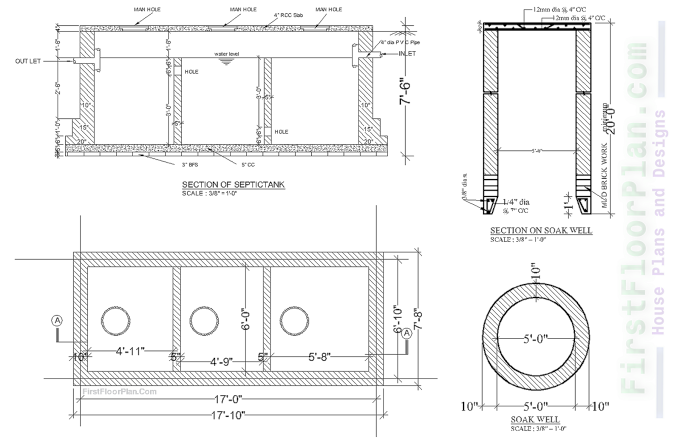Keeping the exterior of your home spick and span is a source of pride for many homeowners. One of the most satisfying and impactful cleaning tasks you can undertake is pressure washing your driveway. Not only does pressure washing instantly enhance your home's curb appeal, but it also removes stubborn stains and can even improve safety by eliminating slippery surfaces.
However, wielding a pressure washer is not without its risks. It's critical to approach the task with proper preparation, safety measures, and knowledge of the equipment and techniques. This comprehensive instructional post will walk you through the entire process — from pre-wash preparations to aftercare and safety considerations — so you can turn your driveway from dull to dazzling with confidence.
Benefits of Pressure Washing Your Driveway
Picture a fresh, clean expanse in front of your home, free from any oil spots, mold, or other unsightly blemishes. The benefits of pressure washing your driveway are not just aesthetic. They also include:
Enhanced Curb Appeal: A clean driveway is one of the first things people notice when they visit your home.
Safety: Removing mold, mildew, and slippery residues prevents accidents, particularly during wet and icy weather.
Surface Longevity: Regular cleaning can extend the life of your driveway by protecting it from corrosive substances and dirt buildup.
Environmental Cleanliness: Eliminating stains and residues also means preventing pollutants from entering the environment through runoff.
Ready to roll up your sleeves and revive your driveway? Here's what you need to do.
Preparing for the Pressure Washing Task
Preparation is key to a successful pressure washing venture. Here are the steps to get ready:
Gather Your Equipment
Start by assembling the tools and materials you'll need:
A pressure washer, preferably one with adjustable pressure settings for versatility.
Pressure washing detergent suited for the surface material of your driveway.
Cleaning attachments and nozzles appropriate for concrete or paving surfaces.
Safety gear, including eye protection, non-slip gloves, and closed-toe shoes.
Select the Right Day
Mike at Superior Cleaning Service says timing is always important. ‘Choose a day with a moderate temperature and no rain forecast. Pressure washing in direct sunlight can cause the cleaning solution to dry too quickly, leading to streaking. Overcast weather is ideal as it provides a balance of drying time and visibility of clean areas.’
The Step-by-Step Pressure Washing Process
Pressure washing is not simply pointing a high-powered hose at the ground. There's a science to it that you must follow to get the best results without damaging your property.
Step 1: Clear the Area
Remove any obstacles from the driveway, such as vehicles, planters, or debris. Things like rocks or small balls can become hazardous projectiles when hit by the force of the water.
Step 2: Apply Detergent
Read the manual or the label of your pressure washing detergent to know the proper dilution. Apply the solution to the driveway, working in sections. Start from the highest point and work your way down to ensure the suds cover the entire area effectively.
Step 3: Use the Pressure Washer
Connect the appropriate nozzle for the job. For a driveway, a fan tip at a 25 to 40-degree spray pattern is a good starting point. Hold the wand at a consistent distance, around 12 to 18 inches from the surface. Move the wand in a sweeping motion, overlapping each pass slightly to ensure full coverage.
The Right Technique
Always keep the wand moving to avoid leaving a 'striped' cleaning pattern on the concrete. For stubborn spots, you can move a little closer, but be careful not to get too close, especially with high pressure. The force can etch concrete, leaving permanent marks.
Tips for an Effective and Safe Pressure Washing Experience
Water under pressure can be incredibly powerful, and with great power comes great responsibility. Here are some tips to help you have a productive and safe pressure washing session:
Always point the nozzle away from you and others, especially when first turning the machine on. Sudden surges can catch you off guard.
Take care around doors and windows. High-pressure water can penetrate seals and cause leaks.
Be conscious of your surroundings. Pressure washing can splash water quite a distance, so make sure you're not inadvertently cleaning your neighbor's car.
Work in sections and reapply detergent as needed. Don't allow the detergent to dry on the surface.
Be mindful of drainage. You don't want detergent and contaminants flowing into the street or storm drains.
Aftercare and Maintenance
You've finished pressure washing, and your driveway looks brand new. Now what?
Rinsing and Finishing Up
Switch to a clean water nozzle and rinse the detergent off the driveway. Work from the highest point to the lowest point to ensure complete drainage. Pay special attention to any runoff and guide it to a location where it won't cause a problem.
Equipment Care
Thoroughly clean all your pressure washing equipment, including the nozzles and wand, according to the manufacturer's instructions. Proper maintenance ensures your equipment remains in good condition for the next use.
Sealing Your Driveway
Consider applying a high-quality sealer to your driveway after it's completely dry. This will help maintain the cleanliness for longer and protect the surface against future staining.
Final Thoughts and Call to Action
Pressure washing your driveway is a DIY project that can yield significant satisfaction and enhancement to your home's exterior. By following the guide and applying the tips above, you're well on your way to enjoying a spotless, safe, and longer-lasting driveway.
We encourage you to share your pressure washing experiences and any questions you may have. Remember, safety should always be your top priority. If you're unsure about any part of the process, don't hesitate to reach out for help. Happy cleaning!










%20House%20plan%20with%207%20storey%20Apartmen%20building%20Structural%20desing%20%20DWG%20&%20PDF.jpg)
